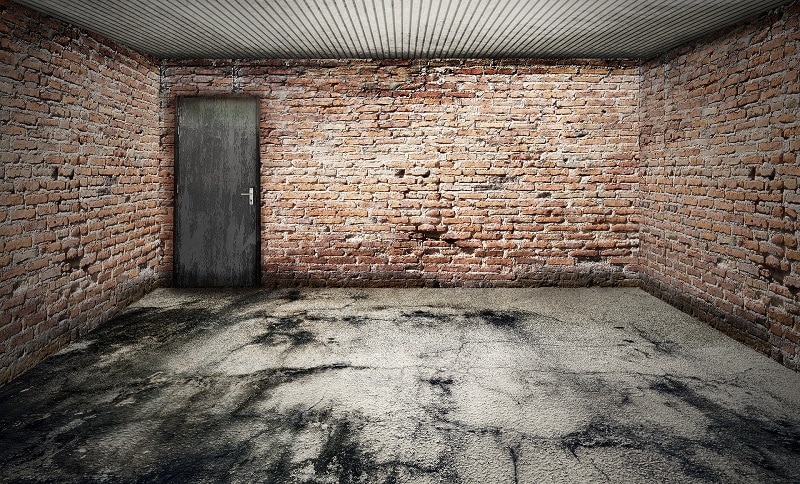7 Best Ways to Heat Your Garage in the Winter (Cost and Ease)
-
Pete Ortiz
- Last updated:

For many of us, our garages are more than just a place to park the car and store old junk. They’re our workstations—a place to explore our hobbies and pursue our DIY dreams. However, that doesn’t mean they’re always the optimal location.
When wintertime comes around, things can get very chilly out in the garage and put a cold damper on our craft. Most garages just aren’t constructed to be warm havens in the winter.
However, you can change that. There are several ways to heat your garage in the winter—most of which are easy and cost-effective. Let’s take a look at some of the best options to ensure you stay nice and toasty.
1. Properly Insulate and Finish Your Garage Walls
The first thing you should do when turning your garage from an icebox to a warm working environment is to properly insulate it. Most garages don’t have insulation on their exterior walls leading the cold to seep in from the outside.
To correct this, we recommend layering your garage with fiberglass batt between studs and finishing with installed drywall, OSB, or plywood paneling. This may seem like a large undertaking at first, but this step is crucial.
Failing to insulate your garage will result in a lot of heat loss to ambient by any heat source you add within. Plus, once the insulation is installed, there’ll be less energy required to heat into your garage leading to a lower heating cost in the long run.
2. Insulate Your Garage Door

Now that the walls are properly insulated, you need to insulate your garage door. Many people tend to overlook this, but it’s just as important as insulating your walls.
Garage doors are often manufactured from thin sheet metal and hold very little—if any—heat. In fact, on cold winter days, you’ll even see frost forming on the interior side of the door. Fortunately, insulating your garage door is extremely simple to do.
There are many different kits available that you can buy to insulate it. These kits typically come with everything you need to properly install the insulation and are easy enough for even the most novice of DIYers.
3. Seal Up All Other Drafts
After you’ve insulated both the walls and door, you’ll want to search for other gaps and spaces leading to the frigid exterior outside of the garage. This includes windows, garage door frames, and gaskets.
This step is something that won’t take you long to do at all. There are plenty of different varieties of weatherstripping, gaskets, and insulating tape that you can use to cheaply seal off your garage.
By properly insulating and sealing up your garage, you’ll begin to immediately notice a rise in the interior temperature of your garage without heating elements. However, to achieve maximum comfort, you may need to employ the use of a heater.
4. Choose an Appropriate Heater

When it comes to choosing the right heater for your garage, there are a ton of different options. Let’s explore some of the different types of heaters and what they can provide.
- Forced Air Heater: These heaters work by blasting hot air into your garage. They come in both electric and gas models which can be routed directly into your home’s mainline. These can be great for many folks; however, forced air heaters aren’t the best for woodworkers. The circulating air can easily spread shavings and sawdust which can be a major problem for staining, painting, and finishing.
- Convection Heaters: These are among the most versatile and common garage heaters. They don’t cause dust spreading issues like forced air heaters and can operate on electricity, propane, or natural gas. The biggest downside to these heaters is that they do take a while to heat up. You’ll also see a bigger increase in your electric bill than other options.
- Infrared Heaters: These are low-intensity heaters that slowly heat the surrounding air to get your garage nice and toasty. They are slightly more energy-efficient than most heaters providing some relief on wintertime heating bills. However, they are very slow to bring the garage up to temp.
- Propane Heaters: Propane heaters run off of standard propane tanks and are often very portable devices. These can quickly provide enough heat to warm your workspace. They are also very affordable when compared to other heaters. You’ll just need to keep them fueled.
- Ductless Heating and Cooling: This is probably one of the best options when it comes to garage heating. They’re super energy efficient, easy to install, and heat quickly and efficiently. These systems can be relatively expensive to install though. But once you make it past the initial investment, you’ll start accumulating big long-term savings on your electric bill.
These are just a few of the most popular and effective electric or gas-powered heaters. But whichever you choose, ensure that you analyze the size of your garage and what BTU rating is required to properly heat it.
5. Transition to Heated Floors

If you find yourself constantly on your back underneath a project car, you might want to consider getting heated floors. Now, this isn’t a light and easy project. Installing these will require you to rip up your current floor and will cost a substantial amount of money.
However, if you can afford it or need it for your primary source of income, heated garage floors are a wonderful addition to your workspace.
6. Use Electric Heating Ceiling Panels
Another great option for garage heating is radiant heat ceiling panels. These are sleek, streamlined panels that can quickly warm up your garage and do so without racking up a large heating bill.
They’re also relatively inexpensive to get started with. If having a neat good-looking garage is important to you, these should be near the top of your list when considering warming options.
7. Install a Wood Burning Stove
A traditional wood-burning stove can provide a great source of heat in your garage if tended properly. And it’s the cheapest option long term—especially if you chop your firewood.
However, you’ll first need to check with your local community to ensure that you have all the proper permits for installing and operating one. These will also require the most periodic maintenance as you’ll need to maintain a clean chimney and flue.
What’s the Best Way to Heat Your Garage in the Winter?
Determining the best way to heat your garage in the winter depends on several factors. You need to consider where you’re located in the world and what winter climates you’ll experience.
Along with location, you’ll need to determine the right amount of heating based on your garage’s area. The larger your garage, the more powerful heating you’ll require. Determine what BTU rating you’ll need and start from there.
Featured Image Credit: Kelly Sikkema, Unsplash
Contents


